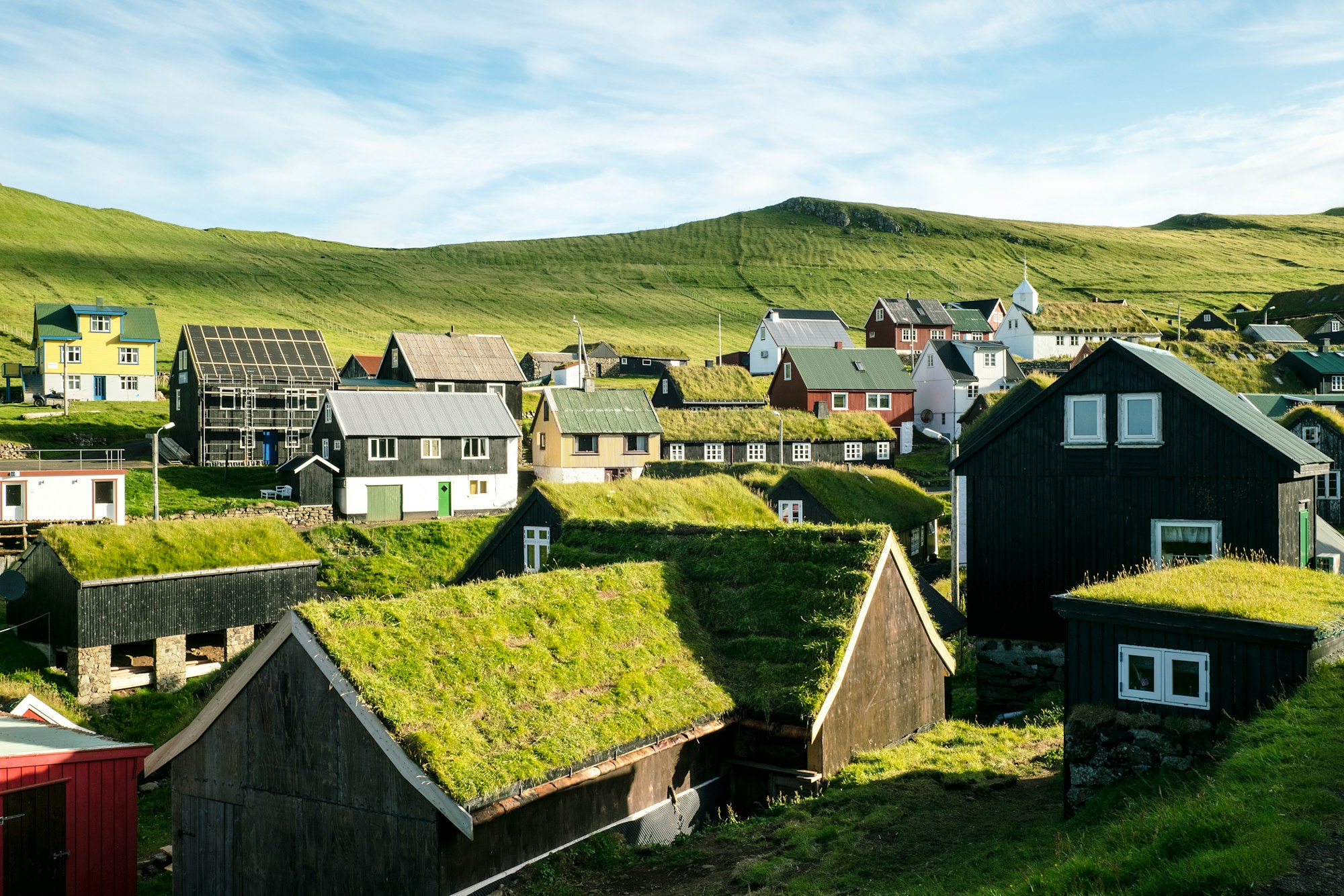5 ways green roofs can help adapting to climate change

As our climate warms, our cities will continue to face rising temperatures and more extreme weather events. And, as the population of our cities is forecast to increase until 2050, there is no doubt that urban areas are key to addressing climate change and will need to take measures to adapt to changing weather. One efficient solution is the use of green roofs on top of buildings.
Thinking of green roofs brings poetic images to mind. Green roofs evoke images of the hanging gardens of Babylon, or a solarpunk future, a balance between human construction and nature.
Living roofs have been in use in some countries for millennia, and today, the technology for such roofs is mature. So why aren’t green roofs more widespread?
Let’s take a look at what green roofs are, and what benefits they can bring. We will also explore how they can help to fight climate change and make cities more livable.

Green roofs, or living roofs, are buildings or infrastructures roofs covered with vegetation and soil, or growing mediums. They may also include anti-root membrane, waterproofing and an irrigation system. There are 2 main systems, extensive and intensive, which depend on the thickness of the growing medium and the amount of maintenance needed.
Extensive roofs usually are very shallow and require close to no maintenance while their overall load remains low. We usually see them on multi-residential buildings or car sheds.
Intensive roofs on the other hand, will be much heavier and their thickness will depend on the type of vegetation we want to see growing. They generally require an irrigation system and can accommodate trees, grass, shrubs, etc. They are usually known as rooftop gardens.
Here is a list of the 5 main advantages of green roofs, that should make them part of any future construction or retrofit.
#1. Fighting heat island effect in cities
Cities, on average, are 5 to 7°C warmer than the countryside. This number can even reach 10°C, especially at night. The main reason for this difference is the construction materials used for our building and infrastructures, which retain heat during the day much more than the natural environment, and radiate it later at night.
Vegetation on the other side reflects most of the heat during daytime and their moisture can evaporate, thus reducing the temperature. So placed on top of our building, green roofs can help cool down the indoor temperature, as well as the surrounding climate.
#2. Draining water from rainfall
When raining on traditional roofs, all the water is evacuated in the city’s drainage or sewage system. With green roofs on the other hand, waste water is retained to be later either absorbed by the vegetation or evaporated. Some studies found that up to 70 to 80% of the water can be retained.
And with climate change and the increase in heavy rainfalls, this system will be essential to prevent the drainage system’s saturation or even flooding in cities.
#3. Helps local biodiversity by bringing habitat for wildlife
Obviously, with more vegetation on rooftops, the biodiversity in the area will be enhanced. Naturally, plants and flowers attract pollinating insects which will help local ecosystems. The roofs can also be paired with beehives and it has been shown that insects are increasing in numbers once a green roof is made in an area.
Plant biodiversity will also be enhanced. Where urbanization has often removed endemic flora species from a built area, a green roof can help bring back the vegetation that was here before the city.
#4. Good insulation, both thermal and acoustic
With traditional roofing, major fluctuations can occur with indoor temperature. With green roofs, most of the light isn’t absorbed and temperature is better regulated, thus reducing the need of mechanical cooling inside the building.
On top of that, soil and plants, as opposed to classic roofing material, are great acoustic insulators, both for the surrounding environment by absorbing the sound, or for the inside of the building. The degree of noise insulation will depend on the thickness, but a 10cm thick green roof can reduce the noise by 5dB already.
#5. Brings beauty to the city - And helps mental health
Beauty may be subjective, but today, most of our cities are dark, grey, full of concrete and asphalt. And billboards can hardly be defined as beautiful… There is little space for greenery and we could all agree that more greenery means more beauty and attractivity, the best example being the increase in property prices when located next to parks or rivers.
Studies also show that nature has positive effects on mental health, and the pandemic in 2020 reminded us that most of our cities are deprived of green spaces.
So on top of urban vegetation benefiting people’s physical health by absorbing pollutants or harmful particles, green roofs can help boost people’s mental health
Green roofs clearly are a solution to both mitigating climate change as well as adapting to the future weather conditions we will face.
The solution still is more expensive than a classic flat or tile roof, but that is without taking into account the long term savings in energy, adaptation to changing climate, etc. The cost is indeed higher for some roofs, as structures sometimes need to be reinforced to withstand the weight.
Today, climate change, pollution or other problems our cities are facing cannot be solved by thinking only of the short term financial benefits. They have to be seen as a part of something bigger, worth investing for future generations.
